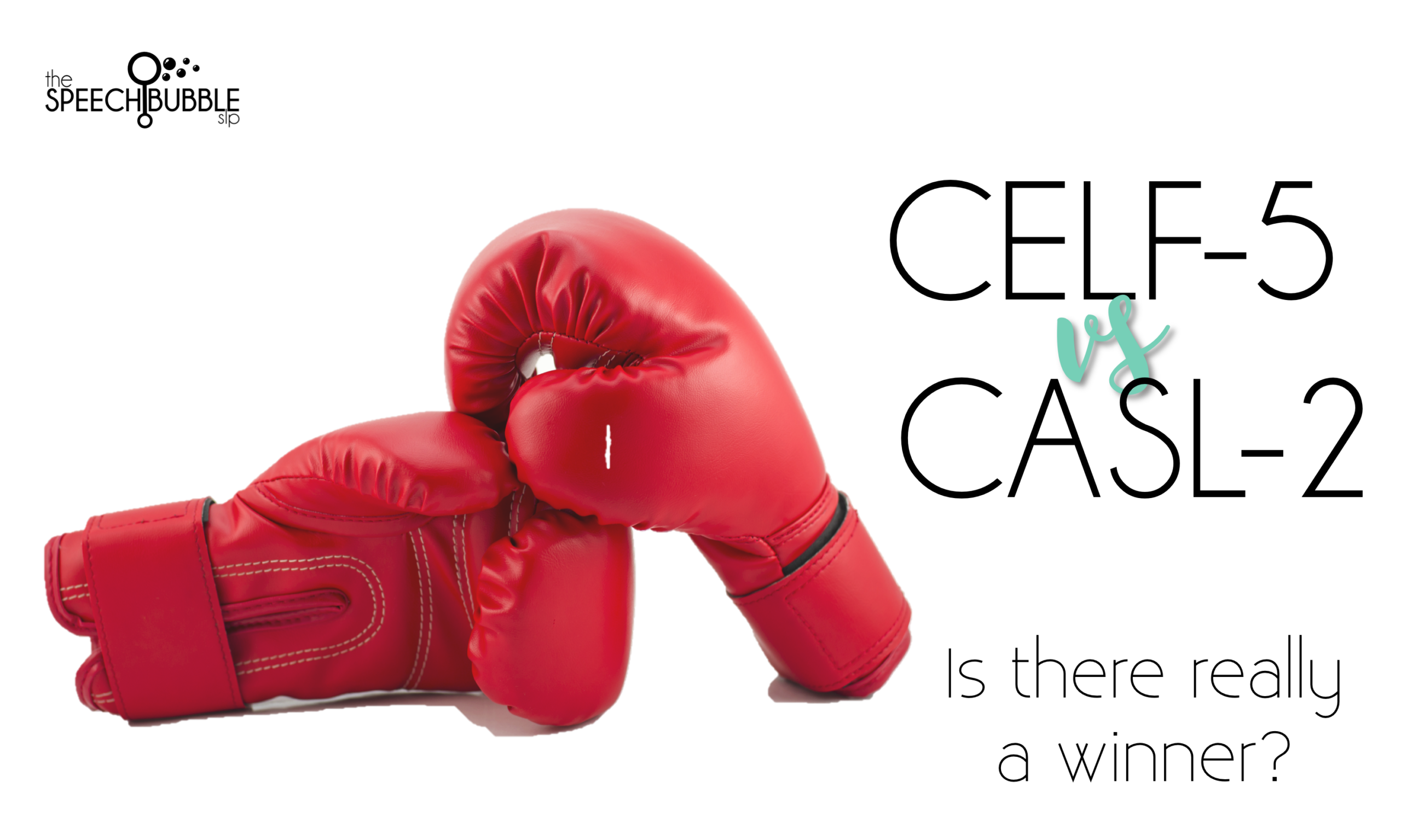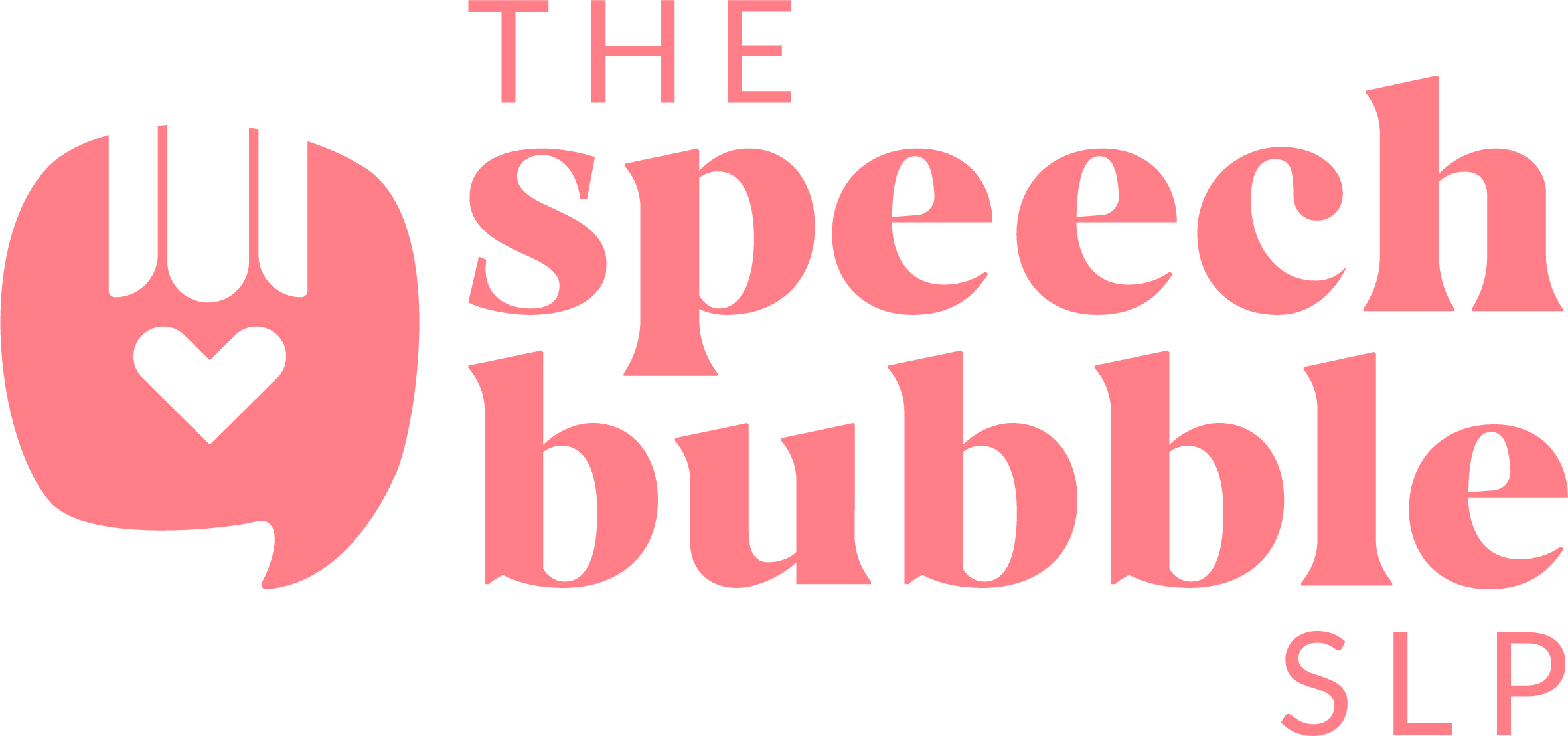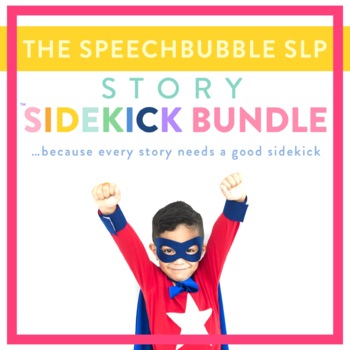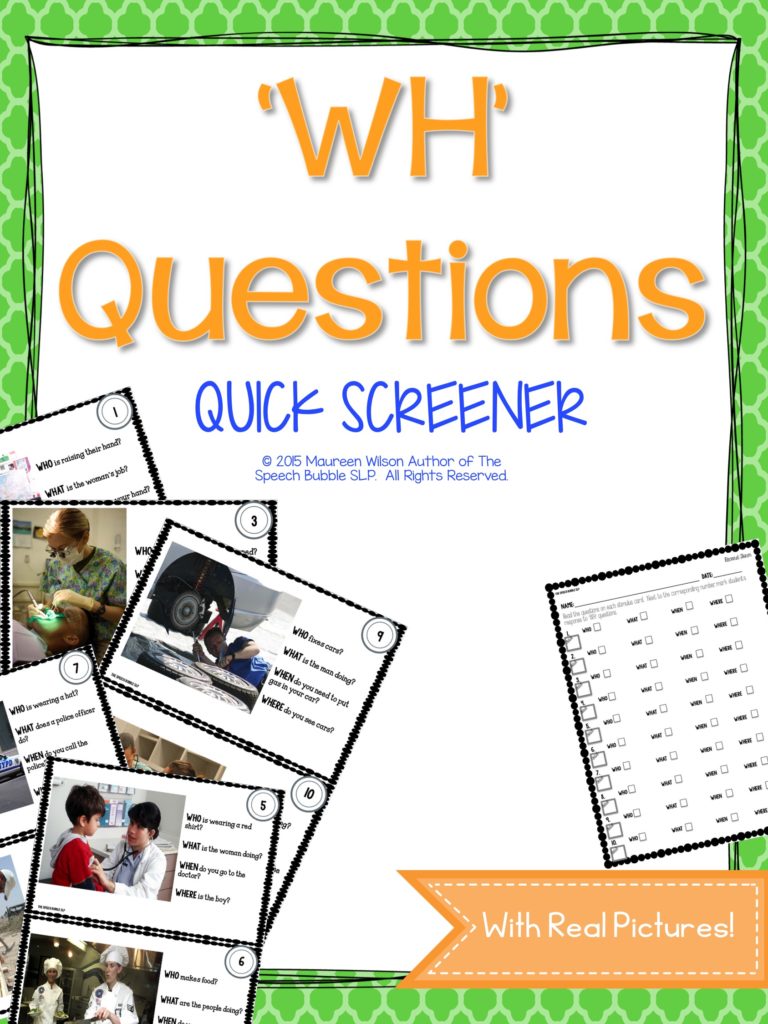In the world of speech and language evaluations there are two assessments that tend to get a lot of attention, the CELF-5 and now, the CASL-2. So how to these two titans of the evaluation world stack up to each other? Is there really a winner? Well I am breaking down some factors of both to see in the end if one does reign supreme!

Keep in mind, these are my opinions from my experiences using both assessments.
*I used the 3-21 form of the CASL-2 and am comparing it to the CELF-5, 5-8 and 9-21 forms.
Time
Time was probably the biggest area of concern. The complete CELF-5 assessment took about 1/3 of the time to give when compared to giving all of the CASL’s subtests for all its extra areas, not just it’s core. The CASL-2 has A LOT more subtests, than the CELF-5 which is a big contributing factor.
Winner: CELF-5
Information
The CASL-2, by far, gave me more information than the CELF-5. With the CELF-5, the SLP must do more work to sort through the responses and information and make judgements using our professional knowledge. Can I get some of the same information from the CEFL-5 that I can get from the CASL? Sure, but it will take longer.
The CASL-2, as I said, contains a bunch of subtests, 14 to be exact, that look at specific things that the CELF-5 compiles into its 9 subtests. The CASL-2 has separate synonym and antonym subtests, whereas the CELF-5 doesn’t. You can make a judgement on vocabulary from the CELF-5 by looking through various subtests and their responses but the CASL-2 has everything already laid out for you. The CASL-2 doesn’t have a following directions subtest but the CELF-5 does. With older students, this typically isn’t as concerning of an area as others, but it is still nice to have. The CASL-2 breaks down syntax and grammar in a nice way, too. The CELF-5 again leaves you to deduce the information from different subtests and responses.
I liked how the CASL also has subtests to look at abstract areas like nonliteral language, ambiguous sentences, pragmatic judgement, idiomatic language, and inferencing. I do feel you need to give a lot of the subtests on the CASL to get a good, thorough picture of the student, not just their core subtests. With the CELF-5, you could just give the core and get a good ‘snapshot’ of the child’s skills in my opinion because of the all the information compiled in those subtest that you can use to deduce other skills.
Winner: CASL
Administration and Scoring
The CELF-5 is easy to administer in my opinion. Just start where the test booklet tells you to according to the student’s age, and keep going until they hit the ceiling. The CELF-5 also makes scoring easy. Count up the correct response for a raw score then use the tables in the back to get scaled scores, standard scores, and percentiles.
The CASL-2 uses a basal and ceiling rule. You start at the student’s age, but they need to get X correct in a row to continue to move forward. If they don’t, you have to jump backward to previous age range and repeat until they get X correct, then you can move forward. Its not much more work to do, but not at straightforward as the CELF-5. Scoring is easy though, basically the same as for the CELF-5. You don’t get scaled scores, only standard scores.
Winner: Tie
So who wins this information showdown?
Looking at our scores, there is no clear winner. Sorry! Both are good tests that will give you lots of great information, but maybe this will help you choose which is best for you.
*IF you want a test that won’t take up a lot of time, will give you a good overview of the student’s language abilities, and is easy to score, the CELF-5 would be a good fit for you. I also think this test is a better for K-2 students, although the with my younger K students they seem to get a lot of wiggle room with scoring. If you are Kindergarten kids you may want to consider giving the Pre-School CELF version if you can.
*IF you want a test that is very thorough and you have time to give it, will give you specific information, looks at vocabulary and higher level skills, and is easy to score, than the CASL is for you. I think this is a good fit for kids in grade 3-5 ( and older ) and who do not have concerns with following directions or basic concepts.
Don’t forget, your comprehensive assessment shouldn’t be your only means of determining growth or eligibility. You should look at what your comprehensive assessment is telling you and determine more specific, content assessment from there. Maybe you can use all the data that you have been collecting to help make a determination.
So in the end there is just one big question — Team CELF-5 or Team CASL?





















22 Responses
Prefer the CELF-5 because the CASL is very lengthy, hate the protocol, and there are too many outdated questions (phone booth!) and too many dead people questions. Interested in seeing the revision when it finally comes out.
Can anyone share a ballpark of how long each takes?
CASL is my first choice. I do agree about the outdated questions but I think it provides more information.
I really like the information you can get from the CASL!
I like the CELF-5 as an overview test, and then I give specific CASL tests to get more in depth information as needed. However, I really wish the CASL would be updated. Not only are some of the items outdated, but the norms are most likely not accurate anymore.
Thank you for your great information. I realise this blog is not about the OWLSII however I was wondering if anyone has experience with this language assessment and how it rates compared to the above mentioned 2.
I use the OWLS almost exclusively when working with middle and high school. I really like it, but it is only 2 large subtests (expressive/receptive). OWLS is updated often and is relatively speedy to give, so a great tool for reevaluations especially. Yields similar information to the CELF with excellent “real life” scenarios
The CELF had been my go-to test until I read this test review done at Columbia University:
http://www.leadersproject.org/2014/02/17/test-review-celf-5/
I was shocked to find that my beloved test faired so poorly, but glad that someone had taken the time to review the updated test.
Thank you for sharing.
The CASL-2 yields additional information relative to high order language skills. I have found that the Grammaticality Judgment Subtest seems to yield much lower standard scores than the other subtests which leads me to question standardization methods. Otherwise, the CASL-2 is quite thorough.
I do agree it give a lot of information. That is interesting about that subtest.
I just came across these two sources reporting that the normative data associated with the GJ subtest are underestimating performance. Both provide access to a CASL-2 Manual Supplement with updated scores.
http://www.wpspublish.com/store/p/3371/comprehensive-assessment-of-spoken-language-second-edition-casl-2
http://www4.parinc.com/WebUploads/samplerpts/Updated%20Grammaticality%20Judgment%20Norms_2.pdf
Hi Maureen! Have you found the scores from the CASL-2 to be slightly higher than other overall language tests?
I’m wondering the same thing. I feel like I was either over identifying with the CELF or underidentifying with the CASL2. I’m hoping the CASL2 is the better option of the 2 since it yields more information.
I find that both assessments ( while there is over lap ) give different information and therefore are using different information when creating their norms, etc. As a trend though, I have noticed that the new versions of assessments coming out seem to identifying more students than they had in the past.
I administered both the CELF5 and CASL2 with 2 students: one Kinder and one 3rd grader, both previously identified with language impairment from early intervention and continuing to demonstrate a need for continued services, based on classroom performance and daily speech data. I found that both students scored in the Borderline/Marginal/At-risk range on all of the CELF5 composites but in the Average range for all CASL2 Indexes. Just based off this experience, I feel like the CASL2 is not as beneficial when working with younger students, but I don’t have experience using it with older students (I’m only K-3). I personally feel like the CASL2 might under-identify students –just based on this experience.
I definitly prefer the CASL-2 with older students ( 3rd grade and up ). I prefer the CELF-5 for my younger ( K-2 ) kids but do feel like they get a bit too much wiggle room with scoring at times, mainly due to their age.
I was wondering what the pragmatics items on the CASL-2 were like especially for the preschool aged children 3-K. Does it give you a good overview of pragmatic skills in those ages?
I haven’t given it to students under 9 yet. When it comes to pragmatics I like the Social Language Development test, the IMAGINE Checklist, or the ADOS.
Does the CASL-2 come ready to use on the computer. I work for a teletherapy company and was just wondering if they mad it available for giving on line?
I am not sure, you would have to check the website